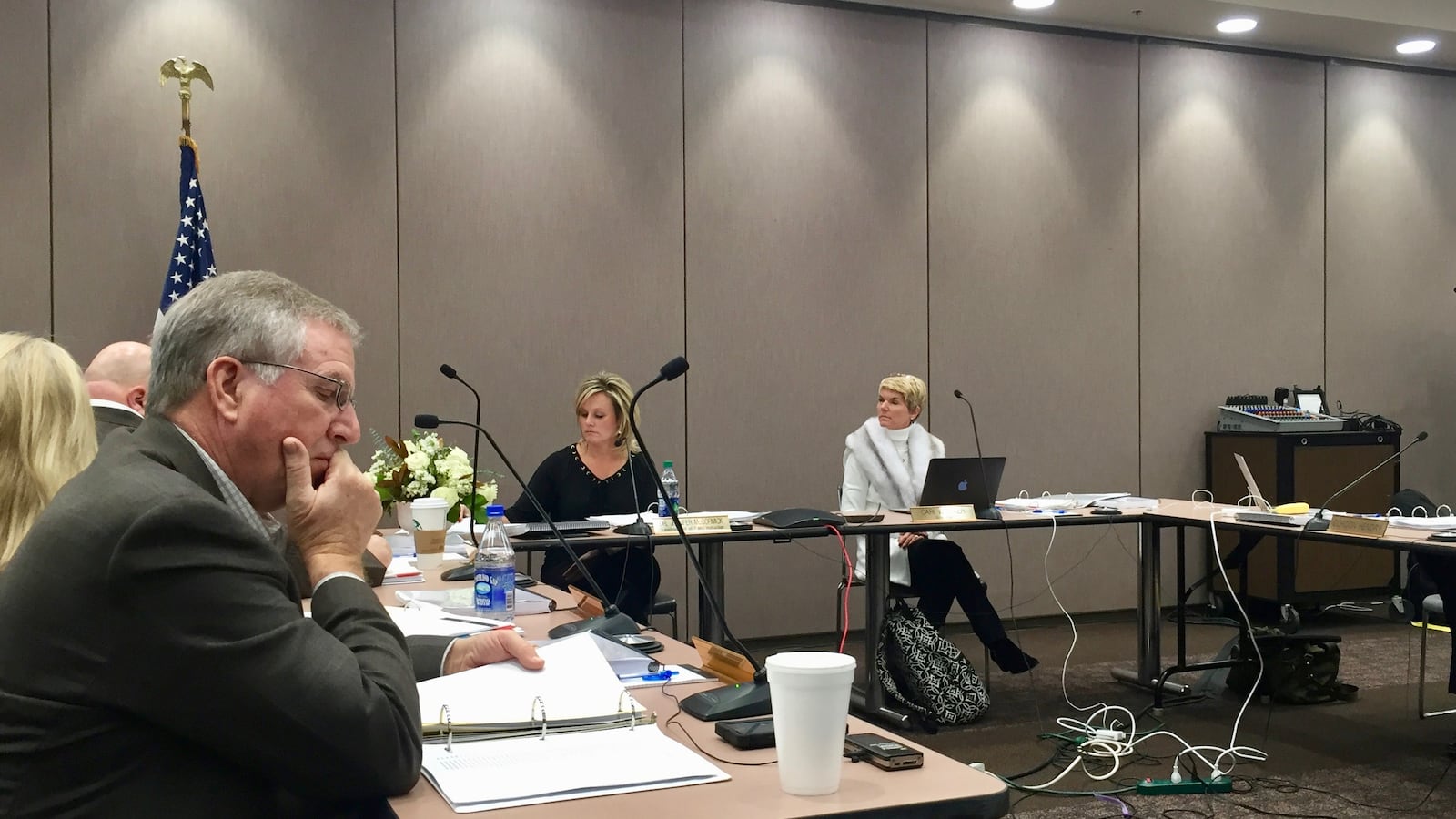After two years of debate, Hoosier Virtual Academy Charter School escaped closure by Indiana education officials on Wednesday but was penalized with a reduction in fees to authorizer Ball State University and a cap on enrollment.
Except for siblings of current students, the Indiana State Board of Education voted to freeze the school’s enrollment immediately. The board also approved a reduction in the fee that Ball State can accept, cutting it from 3 percent to 1 percent of Hoosier Academy’s state funding. The school is operated by for-profit K12 Inc.
The school — among the largest online providers in Indiana — has dealt with years of low test scores and F grades from the state, which triggered its first state board hearing in March of 2015. This decision has been a long time coming — a fact that didn’t escape state Superintendent Jennifer McCormick, who said action needed to happen much earlier. She also said the state should reconsider requirements for how involved authorizers need to be.
“I think it’s unfortunate we’re at this point where we’re having to make this type of decision,” McCormick said. “The authorizer should have gotten aggressive very early and made a decision one way or the other so the state board wouldn’t have been in this situation.”
Read: The broken promise of online schools
Wednesday marked the fourth board appearance in two years for the school. Over that time, the school has continued to receive F grades from the state, admit students and pay hundreds of thousands of dollars to Ball State to authorize it.
The tone of the discussion overall was far more tense and contentious than prior hearings. State board members challenged Hoosier Academy administrators, as well as representatives from K12 and Ball State, to justify why improvement was taking so long and why conversations about improvement seemed to be in such early stages.
Last year, the university collected about $450,000 for overseeing Hoosier Academy, an amount determined by school enrollment. According to the most recent information available, 2,850 students across Indiana currently attend Hoosier Academy Virtual, down from the 3,300 reported by the state earlier this year. The network as a whole, which includes two other virtual and hybrid schools, enrolls about 1,000 additional kids.
One of the biggest concerns among board members was that the school’s curriculum, furnished primarily by K12, is not fully aligned to Indiana’s academic standards. Stuart Udell, CEO of K12 Inc., said Indiana’s changing state academic standards has made it difficult to ensure everything matches up correctly.
“We’ve had a lot of change nationally,” Udell said. “We’ve been working judiciously since we’ve been here on filling in the gaps.”
Yet Cari Whicker and other board members, including McCormick, pointed out that Indiana teachers at every school have been expected to adjust to the many changes in standards and state tests.
“I don’t have the luxury of saying there’s been a lot of change and my grades are not my grades,” said Whicker, a sixth-grade public school teacher in Huntington. “Every teacher in the state of Indiana had to adapt.”
Virtual school leaders argue their poor performance is because they serve a challenging population of students, including those who frequently switch schools, and come to school far behind grade level. In fact, every online school in the state that tested students in 2016 received an F grade, and most have fewer students passing ISTEP than their traditional counterparts.
K12 officials said a new Indiana law passed this year that would allow virtual charter schools to expel students for low participation would make a difference. Currently, virtual schools can’t force students to attend. But it’s hard to see how that allows new flexibility. According to WFYI Public Media, Hoosier Virtual expelled more than 800 students in the past three years.
Although many parents and students traveled to the meeting in Evansville to speak passionately about their positive experiences with the school, Board member Gordon Hendry said it was important to note that that’s not the case for most Hoosier Academy students.
“There’s a whole heck of a lot of students where it’s not working, and the state is spending a ton of money on failure,” Hendry said. “It is on Ball State, but it’s also on K12. They are running the school.”
Ball State University is required to come back to the board next June to ask about renewing the school’s charter. Board members agreed they wanted to see major changes at that point.
“A year from now if there isn’t dramatic change, I’m going to have a pretty different position,” Hendry said.

